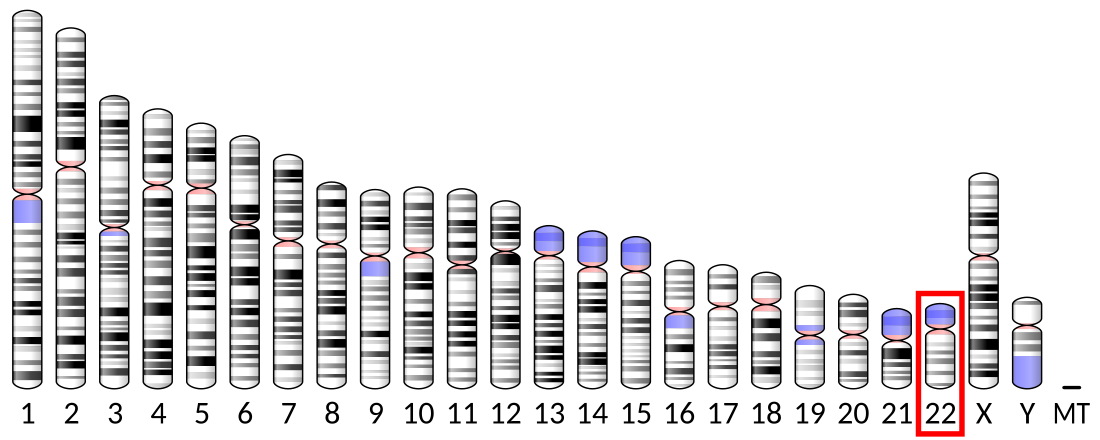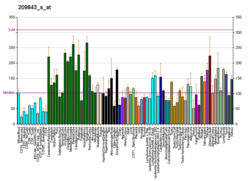Top Qs
Timeline
Chat
Perspective
SOX10
Transcription factor gene of the SOX family From Wikipedia, the free encyclopedia
Remove ads
Transcription factor SOX-10 is a protein that in humans is encoded by the SOX10 gene.[5][6][7][8]
Remove ads
Function
This gene encodes a member of the SOX (SRY-related HMG-box) family of transcription factors involved in the regulation of embryonic development and determination of cell fate. The encoded protein acts as a transcriptional activator after forming a protein complex with other proteins. This protein acts as a nucleocytoplasmic shuttle protein and is important for neural crest and peripheral nervous system development.[8]
In melanocytic cells, there is evidence that SOX10 gene expression may be regulated by MITF.[9]
Remove ads
Mutations
Mutations in this gene are associated with Waardenburg–Shah syndrome[8] and uveal melanoma.[10]
Immunostain
SOX10 is used as an immunohistochemistry marker, being positive in:[11]
- Neuroectodermal neoplasms of neural crest origin, especially:
- SOX10 immunohistochemistry in a dermal nevus, showing positively staining nevus cells (arrows)
- SOX10 immunohistochemistry of normal skin (top) and atypical melanocytic proliferation (bottom), seen mainly in hair follicles.
- SOX10 immunohistochemistry facilitates showing lentigo maligna, as an increased number of melanocytes along stratum basale and nuclear pleumorphism. The changes are continuous with the resection margin (inked in yellow, at left), conferring a diagnosis of a not radically removed lentigo maligna.
- Immunohistochemistry stain for SOX10 in a poorly differentiated metastatic melanoma to a lymph node, helping in its diagnosis.
Interactions
Summarize
Perspective
The interaction between SOX10 and PAX3 is studied best in human patients with Waardenburg syndrome, an autosomal dominant disorder that is divided into four different types based upon mutations in additional genes. SOX10 and PAX3 interactions are thought to be regulators of other genes involved in the symptoms of Waardenburg syndrome, particularly MITF, which influences the development of melanocytes as well as neural crest formation. MITF expression can be transactivated by both SOX10 and PAX3 to have an additive effect.[12][13] The two genes have binding sites near one another on the upstream enhancer of the c-RET gene.[14] SOX10 is also thought to target dopachrome tautomerase through a synergistic interaction with MITF, which then results in other melanocyte alteration.[15]
SOX10 can influence the generation of Myelin Protein Zero (MPZ) transcription through its interactions with proteins such as OLIG1 and EGR2,[16][17] which is important for the functionality of neurons. Other cofactors have been identified, such as SP1, OCT6, NMI, FOXD3 and SOX2.[18]
The interaction between SOX10 and NMI seems to be coexpressed in glial cells, gliomas, and the spinal cord and has been shown to modulate the transcriptional activity of SOX10.[19]
Remove ads
See also
References
Further reading
External links
Wikiwand - on
Seamless Wikipedia browsing. On steroids.
Remove ads










